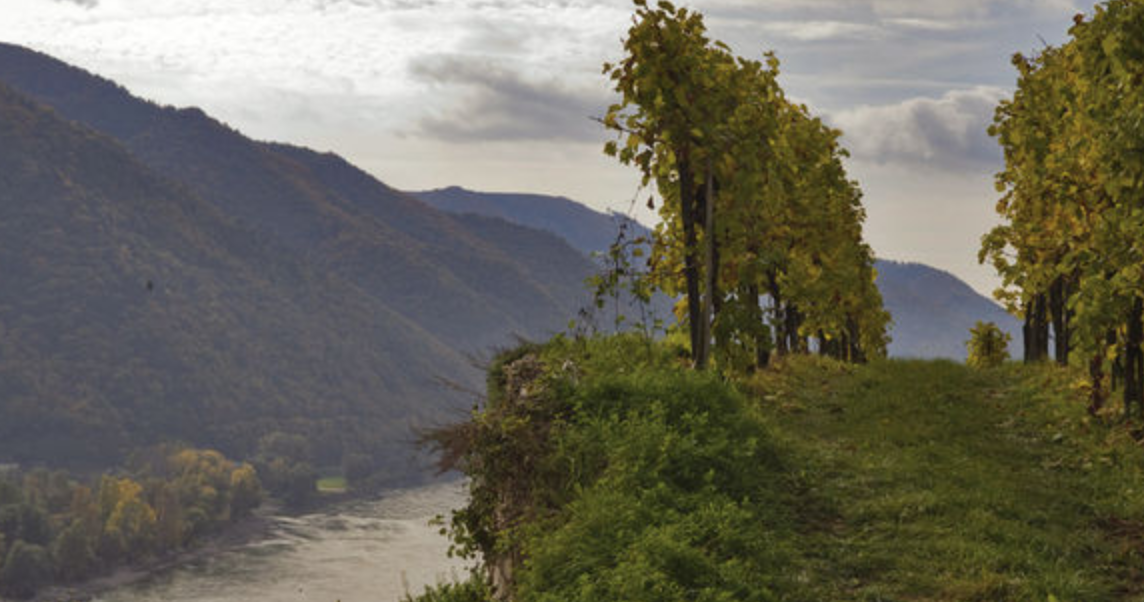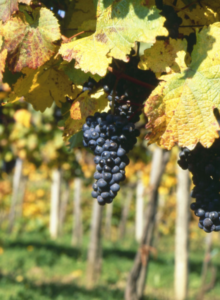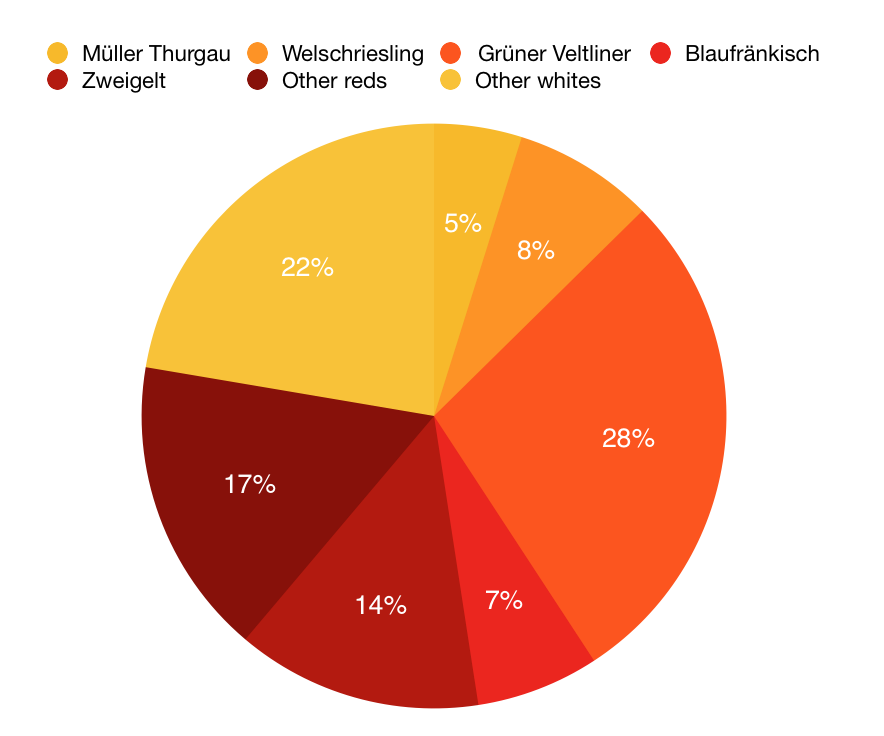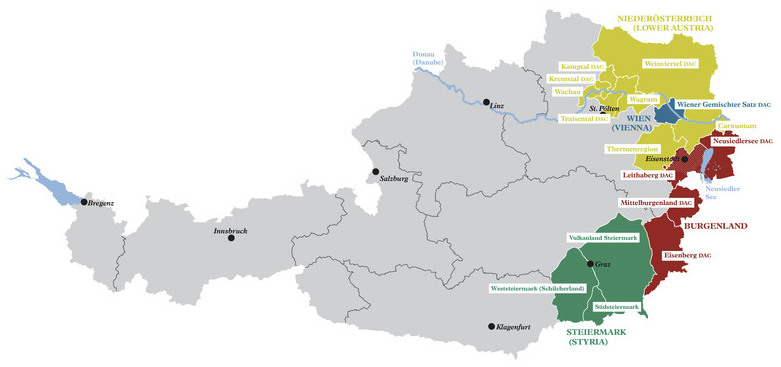This landlocked country has soils from ancient seabeds; was one of the oldest wine regions in central Europe yet has one of the youngest appellation systems; and is full of other delicious contrasts that make its wine intriguing. We’ve got winemaker interviews, articles and photo galleries in our Austria wine guide, but here you’ll find the fast facts and terroir essentials that are key to understanding the Austria’s region: the soil types, climate, average temperatures, rainfall, longitude and latitude, and altitude; the main grape varieties used for different wine varieties; the viticultural methods, age of vineyards and vine training systems; the winemaking techniques, wine styles and tasting notes. Read on for our Fast Facts and Austria wine guide including :
[mepr-hide if=”rule: 2080″]
…
This content is exclusive for Members. Take a look at the introductory packages below to become a Member of 80 Harvests and get unrestricted access to all our content.
Thank you for supporting the journey and being part of the 80 Harvests community!
[mepr-group-price-boxes group_id=”2070″]
[/mepr-hide]
[mepr-show if=”rule: 2080″]
The Essentials of Terroir
Climate and landscape
A continental climate, Austria’s different meso-climates are determined by proximity to rivers and the position of hillsides and vineyard elevation which vary the altitude and wind tunnels. The main different climatic zones are the Danube Area, Weinviertel, Pannonian Area, Steiermark and the Bergland.

Wachau in Lower Austra, by AustrianWine.com
Rainfall
Changes dramatically depending on the location. The wine regions receive up to 1000mm per year in the more mountainous regions, and the flatlands can be as low as 400mm per year. Most vineyards do not irrigate.
Longitude
16.3° E(Vienna)
Latitude
48.2° N (Vienna)
Altitude
Ranging from just under 200m to 560m
Austria wine guide: Viticulture facts & vineyard management
Austria’s wine producers tend to be very small in size. There are just over 45,000 hectares of vines planted and over 20,000 growers, making the average vineyard size just over two hectares.
The maximum permitted yield in Austria is limited to 9,000 kg of grapes per hectare (or 67.5 hectolitres per hectare).
Austria wine guide: Grape varieties

Blaufrankisch vines, AustrianWine.com
Austria has 22 white wine varieties and 14 red wine varieties (35 grape varieties in total) officially approved for production of Qualitätswein (quality wine) and Landwein. Historically Austria has always been dominated by white wines although production of red varieties has grown in the last 20 years. Today approximately a third of Austria’s wines are red.
There are a mix of international grapes in Austria including most notably Riesling as well as Pinot Blanc, Pinot Noir, Merlot and Syrah.
However most important are the native grape varieties including Grüner Veltiner, Zweigelt, Blaufränkisch and Sankt Laurent (or St Laurent).

Number of producers
20,000 growers.
Annual production
On a good vintage, over 250 million liters. Most of it is consumed in Austria or exported to Germany or Switzerland.
Austria wine guide: Main wine regions
Niederösterreich (Lower Austria)
With 28,145 hectares, Niederösterreich is the largest wine region in Austria and stretches from the Wachau in the west to Carnuntum in the east. Over 44% of plantings in Niederösterreich are Grüner Veltliner. Regions within Niederösterreich include: Carnuntum, Kamptal, Kremstal, Thermenregion, Traisental, Wachau, Wagram, and Weinviertel.
The Wachau, Austria’s most prestigious region, has a bigger influence from the Danube and less loess. Here 4000 vines/ha. Rainfall averages 460mm. Drip irrigation permitted. Most estates bottle themselves as there is no wholesaler here. There is one important cooperative – Domäne Wachau, also focussed on quality.
Kremstal straddles the Danube, which moderates the climate, and is geologically diverse. Grüner Veltliner 1310 ha, Riesling important, reds are a quarter of plantings.
Kamptal – half plantings are Grüner Veltliner.Most vineyards on gentle slopes or terraces. Wide range of soils. Wide diurnal range means vibrant whites with good acidity.
Traisental – 790 ha – more than half Grüner Veltliner.This area gets more rain than Kremstal and Kamptal but winds blow up the valley from the Alps, drying the grapes. Vines trained high because of risks of frost and botrytis.
Wagram – 2684 ha – GV = 1333 hectares.Most of vineyards to north of Danube, just a few to south. Mainly loess soils. Benign climate. Some red wines and some vintages they can make Eiswein.
Weinviertel – jumble of sub-regions totalling 14580 ha.7000 ha are GV and whites predominate. Austria’s largest wine region. Topography flat to gently undulating. Known for bulk wines and is still struggling to be taken seriously, though it makes some very good wines. Rainfall 400-600mm (varies across region)
Carmuntum best-known for reds, though also does excellent whites. Carmuntum named for Roman city (ruins visible), had field blends until recently and in 80s and 90s planted reds, especially Zweigelt and some Blaufränkisch. Vineyards on gently rolling slopes and plateaux. Sand, loam, loess and gravel. No need to irrigate. Varietal wines but also blends known as cuvées.
Thermenregion – 2 subregions. Gumpoldskirchen in the north enjoys centuries of reputation as a wine producing area -well-drained slopes, warmth of the Pannonian plain and good ventilation. This area used to produce outstanding sweet wines that are now unfashionable. Local varieties Rotgipfler and Zierfandler being produced in small quantities still, grown at altitude. The other sub-region is Tattendorf, a flatter area on a plateau; frost can be a problem. Alluvial / gravel soils. Lots of red wines, especially Pinot Noir, also some Chardonnay.
Burgenland
The second-largest region in Austria, Burgenland has 13,100 hectares of vines and has a warmer, continental climate known for producing Blaufränkisch, Zweigelt and other red wines, as well as some noble rot, sweet dessert wine. Formerly Austro-Hungary and still a few vestiges of Hungarian influence persist. Regions within Burgenland include: Eisenberg, Leithaberg, Mittelburgenland and Neusiedlersee.
Leithaberg (formerly known as Neusiedlersee Hügelland) – 3200 ha, slight majority of whites but Blaufränkisch and GV are the most planted. This is one of Burgenland’s cooler areas and produces elegant reds with higher acidity. Geologically complex hills, also flatter areas. Leithaberg DAC for whites and for reds. Latter must have at least 85% Blaufränkisch, rest being St Laurent, Zweigelt or Pinot Noir. Alcohol 12.5-13%; oak cannot dominate. This area also known for Ausbruch from Rust.
Neusiedlersee is the largest and warmest area in Burgenland. 7170 ha, half whites. It occupies the eastern side of the lake Neusiedlersee, a shallow lake (and there are 47 other lakes and ponds nearby). They create high humidity and are given to autumn morning mists which clear in the afternoon, ideal for botrytis, hence the sweet wines from this area. The region benefits from the Pannonian climate from the Hungarian plains – warm, balmy summer, limited diurnal range, so acidity can be lower than the areas on the slopes on the other side of the lake.Weissburgunder, Chardonnay, GV and Welschriesling are the important whites, while Zweigelt leads the reds, which are often blends.
Mittelburgenland, south of Neusiedlersee, hugging Hungarian border, mainly reds. Blaufränkisch = 55% of plantings, also Merlot and Zweigelt. Sheltered region, exposed to warm air from Pannonian plain. 500mm rainfall. Hot, dry summers, some humidity in autumn. Clay and loam soil with some limestone. Powerful reds. 3-tier DAC system, all reds based on Blaufränkisch.
Eisenburg (formerly Südburgenland). Western side of Hungarian border. Small area; Blaufränkisch important and the basis for Eisenburg DAC. Different elevations and soils. Temperatures milder here. Rainfall 650mm – vines can suffer water stress in summer. 40% of plantings are white, starting with Welschriesling.
Steiermark (Styria)
Styria is best known for its white wines – especially Sauvignon Blanc – in this hilly area in south-east Austria that claims 4,633 hectares of vineyards. The winters can be particularly harsh, dropping below -20˚C occassionally and frost and hail are hazards. Rainfall is between 800-1200mm per year and can sometimes fall at the wrong time, like flowering or harvest. Steep vineyards also lead to erosion. The region is known for its refreshing whites, but this is also a hotbed of experimentation, including orange wines and natural wines. Regions within Steiermark include: Vulkanland Steiermark, Südsteiermark and Schilcherland.
Vulkenland Steiermark (formerly Südoststeiermark)
Most easterly of the sub-regions and so slightly warmer so richer, slightly less aromatic wines but still good acidity. Volcanic influence in soils, eg basalt. Slopes. Mostly whites, some Zweigelt.
Südsteiermark is a small region, mainly planted with whites. Steep slopes, vineyards at altitude (up to 600m), wide diurnal range. Sauvignon Blanc is the signature variety.
Weststeiermark is the largest of the 3 sub-regions. 333 hectares given to regional variety Blauer Wildbacher which makes a rosé very popular in Austria called Schilcher with high acidity. 1000mm rainfall, elevations up to 600m.
Wien (Vienna)
This small region near Vienna city has just 637 hectares within view of the city, offering a popular tourist trade visiting the small wine houses and taverns. Over 500 of its hectares are white wine grapes and Grüner Veltiner is the most popular followed by Weissburgunder, Chardonnay, Riesling, and Zweigelt.
Wine Labelling & The Law
In general, Austria uses the same rules as German wine classifications:
1 Klosterneuberg Mostwaage (KMW) = 5 ˚Oechsle
• Tafelwein: >10.7°KMW, can come from more than one region
• Landwein: >14°KMW, >17 g/litre dry extract, <11.5% alcohol, <6 g/l residual sugar. A Tafelwein that comes from just one region.
• Qualitätswein: >15°KMW (can be chaptalised to 19°KMW for whites, 20°KMW for reds), >9% alcohol. Comes from a single wine district.
• Kabinett: >17°KMW Qualitätswein with no chaptalisation, residual sugar <9 g/litre, alcohol <12.7%.
• Prädikatswein : covers the range from Spätlese to Eiswein, to which nothing can be added—no must, no chaptalisation. Most of the wines may not be released until 1 May after harvest.[7]
• Spätlese: >19°KMW, wine not released until 1 March after harvest
• Auslese: >21°KMW, bad grapes removed
• Beerenauslese: >25°KMW, bad grapes removed
• Ausbruch: >27°KMW, botrytised grapes, grape juice or late harvest wine may be added to assist the pressing operation.
• Trockenbeerenauslese: >30°KMW, completely botrytised grapes
• Eiswein: >25°KMW, further concentrated by being harvested and pressed when frozen.[7]
• Strohwein or Schilfwein: >25°KMW, made from grapes dried on straw mats.
However Wachau has its own classification:
• Steinfeder (“Stone feather”—named after a grass, Stipa pennata, that grows in the vineyards): maximum 11.5% alcohol, mostly for local quaffing.[12]
• Federspiel (named after a falconry device): 11.5% to 12.5% alcohol and a minimum must weight of 17° KMW, roughly equivalent to Kabinett.[13]
• Smaragd (named after an ’emerald’ lizard that lives in the vineyards): minimum 12.5% alcohol, with a maximum 9 g/litre residual sugar; some of the best dry whites in Austria.[14]
There are nine DACs (Districtus Austriae Controllatus):
1. Weinviertel DAC (for Grüner Veltliner)
2. Mittelburgenland DAC (for Blaufränkisch)
3. Traisental DAC (for both Riesling and Grüner Veltliner)
4. Kremstal DAC (for both Riesling and Grüner Veltliner)
5. Kamptal DAC (for both Riesling and Grüner Veltliner)
6. Leithaberg DAC (for Grüner Veltliner, Weißburgunder, Chardonnay, Neuburger and Blaufränkisch, beginning September 2010)
7. Eisenberg DAC (for Blaufränkisch, beginning September 2010)
8. Neusiedlersee DAC (100% Zwiegelt for Klassik and min 60% Zwiegelt for Reserve Cuvée Blend)
9. Wiener Gemischter Satz DAC (minimum of three white grape varieties of one vineyard, harvested and produced together)
Interesting facts
- Austria is one of Europe’s oldest wine regions. The Romans started producing wine there over 2000 years ago.
- Wine producers sometimes still age in acacia oak, as per tradition in the region.
- Gemischter Satz mean field blend.
- Orange wine is a growing trend, where destemmed grapes are put into amphorae buried in the ground, as well as natural, organic and biodynamic wine production.
[/mepr-show]

